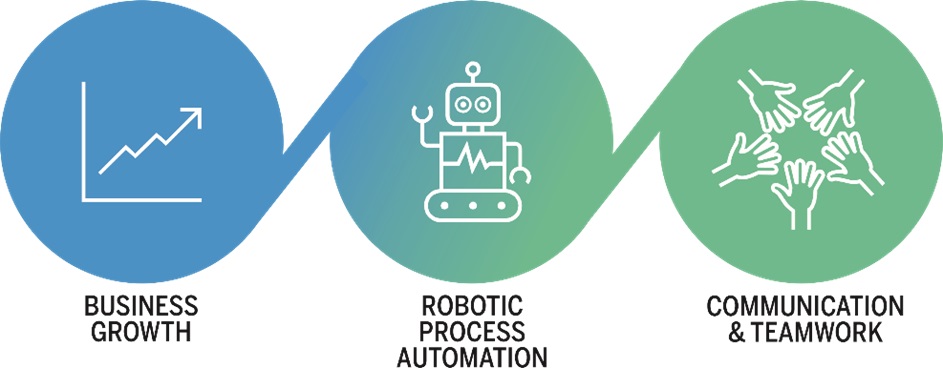The world changes. Every day. Every hour. When the pandemic locked everybody down the change was real, even surreal, touchable for everybody. Consequently, business got in financial jeopardy and distress seemingly overnight, with only a very few options on the table. In fact, the possibilities slimmed down to none if the business wasn’t running already digitally. Of course, I doubt that your business wasn’t digitized a year ago, as I assume your company size (and the revenue it delivers) is healthy enough to plan for an SAP S/4HANA transformation. However, the speed of change is the commanding parameter, allowing no wait-and-see periods.
Our digital surroundings demand more and more integration, even on the data and business process levels. Baffled, we look at the businesses running already on digital cores before the stay-at-home orders occurred. Many of these businesses excelled significantly, while others, sadly, went out of operation. Now, at the tail-end of the pandemic, however, it’s time to catch up. Digital integration with a single-source-of-truth paradigm enables Robotic Process Automation (RPA) along with a communication structure that allows distributed teams to achieve the goals as they were sitting together in the company’s offices (Figure 1). Therefore, the time to rejuvenate the digital core is now, and it demands the consolidation and integration of as many legacy systems as possible.
Figure 1: Digitize Now.
In former years, companies (maybe yours, too) spent truckloads of money and large chunks of time implementing ERP systems, only to become ‘locked in’ to a software vendor eventually. With the arrival of S/4HANA and its tremendous real-time capabilities, though, the need for fast and furious transformation became front and center. Over the last years, SAP supported rapid implementation projects with completely pre-configured model companies, ready to be used for specific industries or specific business scenarios. It seemed that all was set and prepared for the perfect business solution.
But this equation doesn’t work perfectly with the existence of old data, particularly if the data is stored across some old legacy systems. In my book, “Escape the Change Dilemma,” I named this challenge the Legacy Challenge. Often preserving the past as long as possible, many large corporations conduct only small incremental steps of change rather than dramatically shifting and potentially disrupting their business execution’s status quo. Wouldn’t it be wishful thinking to consolidate all the data into one central source of truth while getting rid of the old systems at the same time? Let’s keep this question open for a few moments because we need first to think about why we would want a One System architecture instead of several. Several arguments are supporting this One System paradigm.
Consolidated data is easier to access. Having one central database to operate simplifies the entire data backup procedures, and in a disaster situation, enables fast data restoration. All data and database monitoring tasks are effortless to centralize. And with regards to data protection, any data access and authorization policies are fast and reliable to implement.
Business processes within central systems are better to monitor and simpler to adapt. Today, digital business operations require comprehensive insight at any given time. Knowing that business processes run well allows to focus laser-sharp on the customers.
Integration of different business units within One consolidated System allows the full execution of enterprise-wide management on the tactical and strategic levels. The one-single-source-of-truth approach prevents major breaks or hiccups in the data chains, enabling real-time business operation, particularly when speaking of S/4HANA.
Value realization of the new One System approach kicks in from the start of the transformation project. Moving all data from several legacy systems into One System enables full analytical capabilities from the past to today’s situation and the prediction of tomorrow. Of course, the Decommissioning of old legacy systems is a must-have to enable the benefits of several factors: reducing technical complexity and dependencies, and reducing maintenance and administration cost.
One System paves the way to the Cloud, too. Companies prevent the locked-in situation while enjoying elasticity, adaptability, and scalability at the same time. One System helps to avoid multi-cloud scenarios, or at least limits those. The value proposition for One Cloud applications is compelling: easy access, no need to focus on operation, and all hands and minds focused on driving business growth and innovation.
In closing, I’d like to answer the question I posed previously. It is not wishful thinking to consolidate all data from all legacy systems into One System such as SAP S/4HANA, banking on short project cycles. SAP, along with its partners SNP and DMI (JiVS IMP), provide all the needed tools and capabilities. The recent webinar speaks for itself. One final point I have to make. Shutting off the old legacy systems after the successful data consolidation is one of the biggest success factors for the entire transformational business case. Only managing the whole project strictly and rigorously to the end should allow for celebration.


